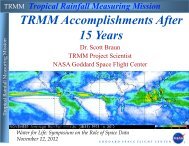ALOS Data Users Handbook
ALOS Data Users Handbook
ALOS Data Users Handbook
Create successful ePaper yourself
Turn your PDF publications into a flip-book with our unique Google optimized e-Paper software.
Section 7 Overview of Processing Algorithms⎛f ( t)= cos 2π⎜ F⎝τ τ− ≤ t ≤2 2ck ⎞+ t ⎟ ⋅t2 ⎠Equation 7.3-1Where,F c denotes the transmission carrier frequency,k denotes the chirp rate (a function of temperature) andτ denotes the transmission pulse width.For the above transmission signal, the received signal f R (t) is represented approximately by the followingequation.⎧k2⎫f R ( t)= exp 2πj⎨ ( t −Tr) − FcTr+ Fd( t)⋅( t −Tr) ⎬⎩2⎭Equation 7.3-2τ τ− + Tr≤ t ≤ + Tr2 2Where, F d (t) denotes the Doppler frequency, T r denotes the time necessary for electromagnetic wavepropagation.In the term for the phase in the above equation, the first term denotes the transmission chirp wave componentand the second term denotes the phase delay created by the time necessary to make a round trip between thesatellite and the target. Since the distance between the satellite and the target varies for every pulse repeatcycle, the phase in the second term varies and this becomes the Doppler component in the azimuth direction.The third term denotes the phase shift component created because the transmitting position and the receivingposition of the electromagnetic wave differ since the satellite is moving when it transmits and receives theelectromagnetic wave.This received signal becomes the input signal of the range compression. The correlation operation in therange direction is conducted in the frequency domain by FFT. Thus, the received signal F(f) in the frequencydomain is represented as follows.F( f ) = ∫ f R ( t)⋅exp(−2πjft)dtEquation 7.3-3Where reference function of this is shown as Equation 7.3-4 and the complex conjugate in the frequencydomain is represented by G(f)*, the range-compressed signal h(t) is obtained by conducting a reverse FFT onthe product of F(f) and G(f)* and represented as follows.h( t)= ∫ F(f ) ⋅G*( f ) ⋅exp( 2πjft)dtEquation 7.3-47-28


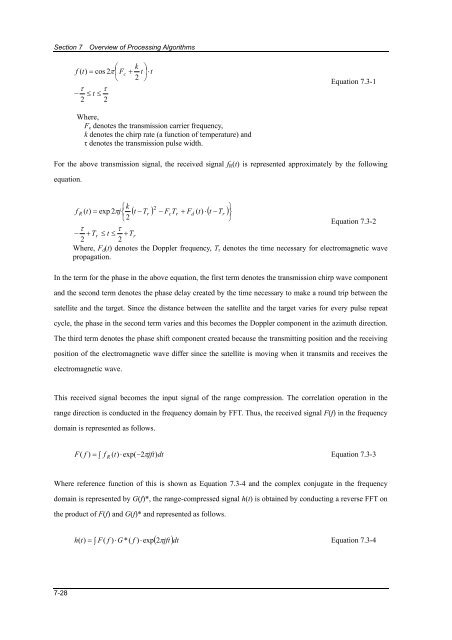
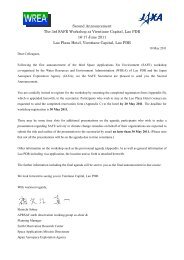
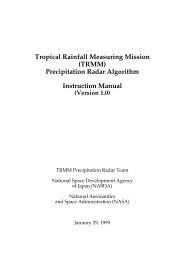


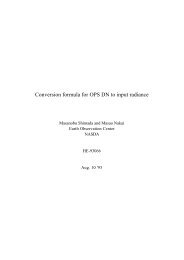
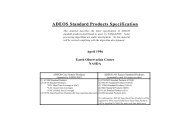
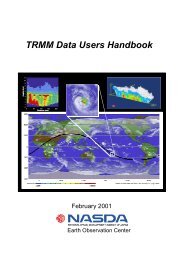

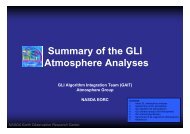
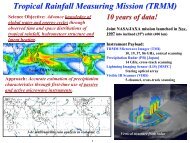
![4.12.2a_Tibet_Wu Guoxiong Tibet-CEOP.ppt[]](https://img.yumpu.com/35802437/1/190x135/4122a-tibet-wu-guoxiong-tibet-ceopppt.jpg?quality=85)
